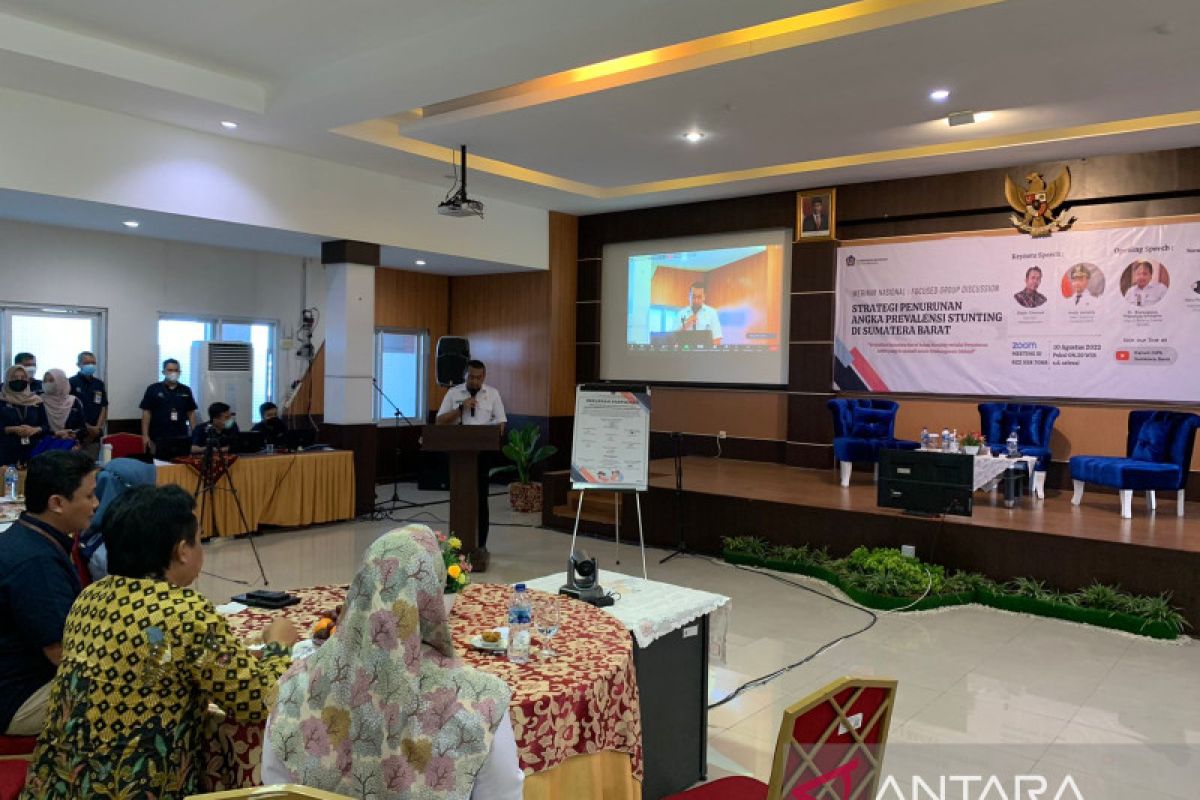All parties must be involved in contributing (within their ability or authority) in reducing the stunting ratePadang, West Sumatra (ANTARA) - Deputy Governor of West Sumatra Audy Joinaldy has sought the integration of regional stunting reduction programs so that there is no overlap between them.
"Many organizations other than governments also want to conduct stunting reduction activities, but they do it on their own. We ask the National Population and Family Planning Agency (BKKBN) to bring them all together so that this program can become more extensive," he said in Padang on Wednesday.
He cited the example of the National Pediatrics Association, obstetrician associations, and other medical associations, all of which want to help address the stunting problem in West Sumatra.
"We urge that all of this (efforts) be (integrated) so that this program (can reach everyone) who are indeed at risk (of stunting in a fair manner) and are able to pursue reduction in stunting prevalence in West Sumatra," he said.
Related news: BRIN develops soybean hydrolyzate technology to address malnutrition
Currently, there are several cities and districts in West Sumatra where the stunting prevalence is above the provincial average, such as Solok district, with a 40.1 percent stunting rate, followed by Pasaman (30.1 percent) and Sijunjung (30.2 percent) districts.
They also include Padang Pariaman district (28.3 percent), Limapuluh Kota district (28.2 percent), Mentawai Islands district (27.3 percent), Pesisir Selatan district (25.2 percent), South Solok (24.5 percent), and West Pasaman district (24 percent).
The high rate of stunting in West Sumatra is baffling since the area has a wealth of protein sources, ranging from chicken eggs, freshwater fish, seas, and food barns in the Central Sumatra region, he said.
"With this advantage, West Sumatra should be far from the national stunting rate threshold, but this is not the case. And right now, of course, expediting public education must be pursued, as well as interventions for children at risk of stunting," he elaborated.
Related news: Three key variables in PK21 extreme poverty data: BKKBN
Moreover, universities must be involved through discussions among academics to formulate strategies and exact measures for reducing the stunting rate.
"All parties must be involved in contributing (within their ability or authority) in reducing the stunting rate," he said.
Meanwhile, head West Sumatra representative at the National Population and Family Planning Agency, Fatmawati said that President Joko Widodo has given directives to the agency, prompting it to reduce stunting rates in Indonesia.
Related news: Families must understand stunting indicators in children
The figure for stunting prevalence has been obtained from the 2021 Indonesia Nutrition Status Survey conducted by the Health Ministry, the official added.
"They measured the height of children under two years old and found that their height did not meet existing standards, and this is what we (aim to resolve) together," she said.
In the 2019 survey, stunting prevalence in West Sumatra was recorded at 29 percent, and the province managed to bring it down to 23.3 percent in two years as everyone contributed to addressing the problem.
"Our target is to continue to (push the rate down) and help the (central government) reduce the stunting rate to 14 percent by 2024," she added.
Related news: BRIN develops nutritious biscuits to tackle anemia in pregnant women
Related news: Immunization can help prevent recurring disease, stunting: official
Translator: Mario S N, Mecca Yumna
Editor: Fardah Assegaf
Copyright © ANTARA 2022











